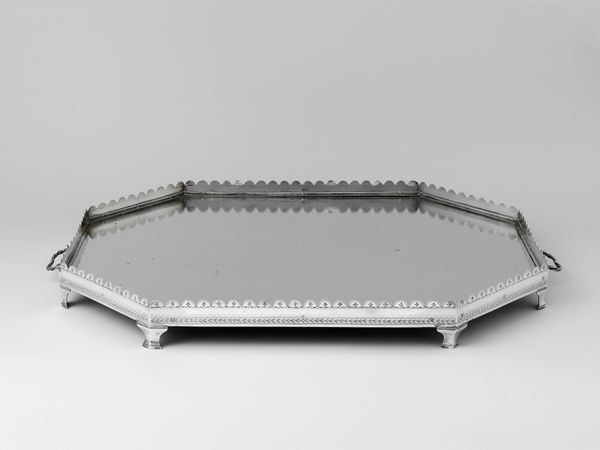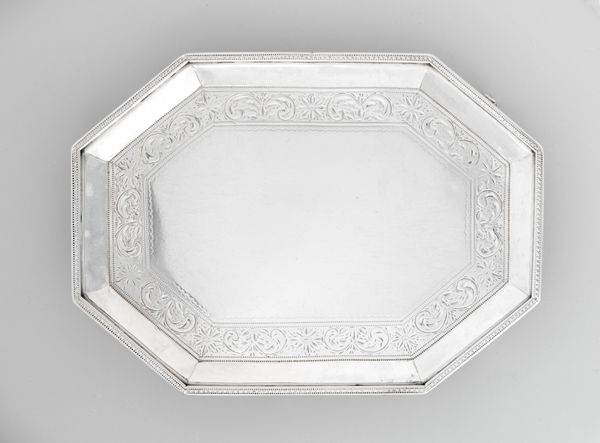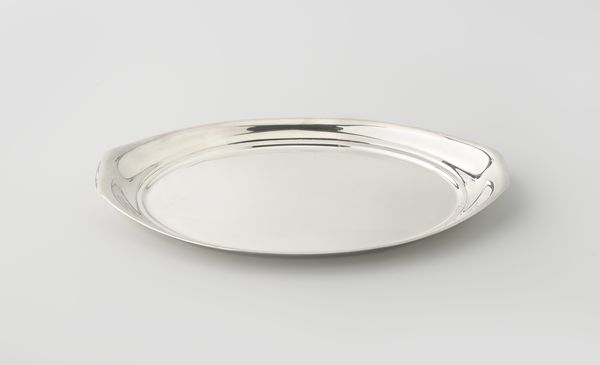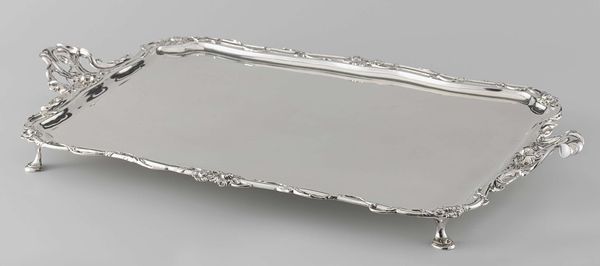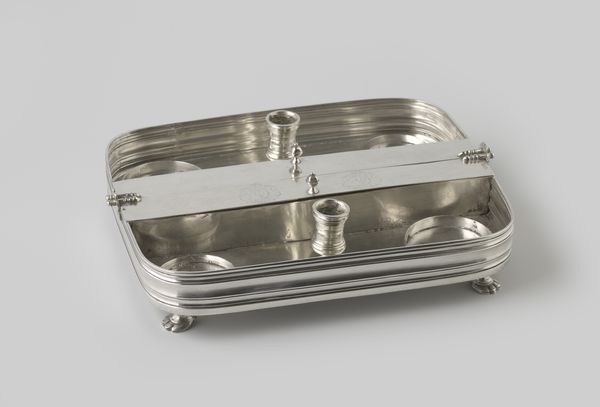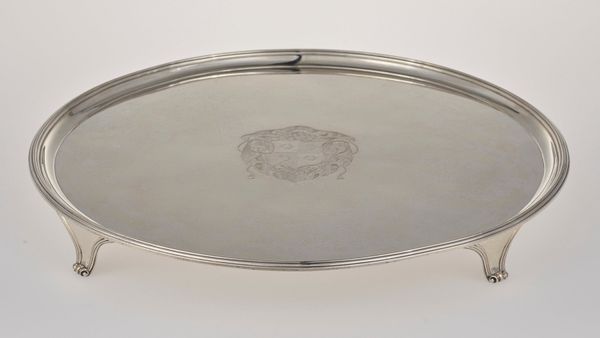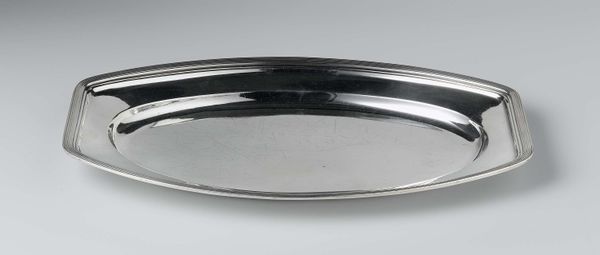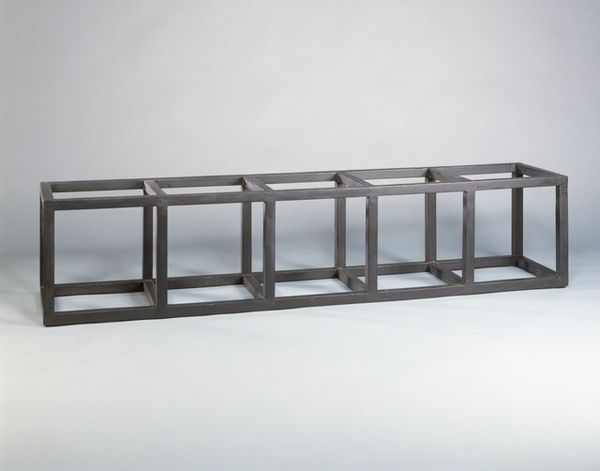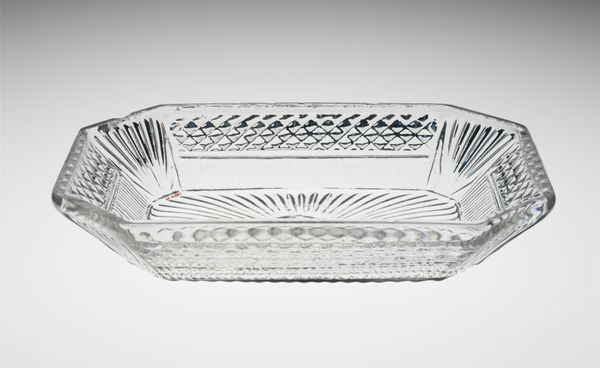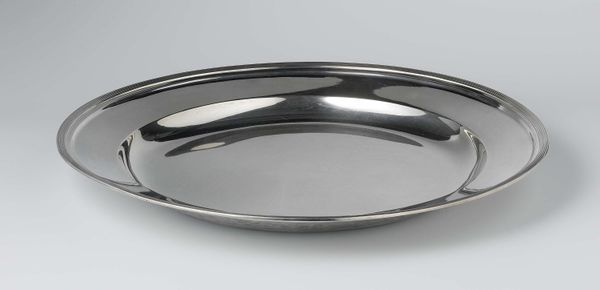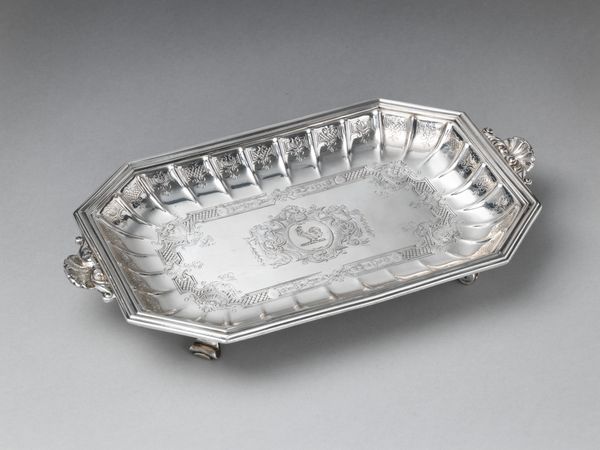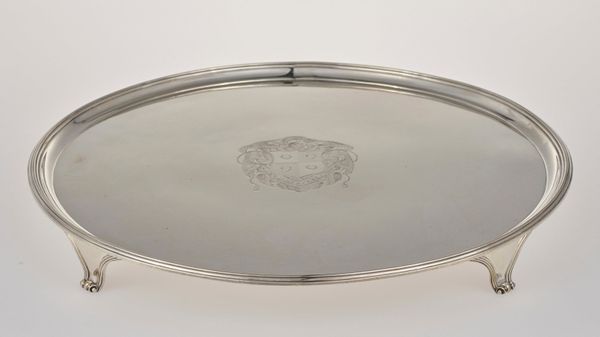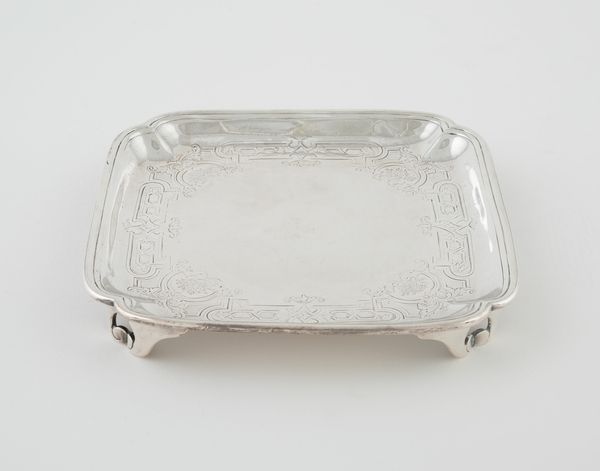
Dimensions: height 3.3 cm, width 25.4 cm, depth 25.4 cm, weight 734.0 gr
Copyright: Rijks Museum: Open Domain
Editor: We're looking at a beautiful silver tray made in 1782 by Reynier Brandt. It has an open-work rim and little feet, it feels both ornate and functional. What strikes me is its quiet elegance. What can you tell me about this piece? Curator: Well, from a historical perspective, pieces like this were often displays of wealth and refinement within the Dutch upper classes. How do you think the design of such an object reflects societal values of the late 18th century? Editor: I suppose it signifies status; having something so beautiful suggests access to luxury. I'm curious about that open-work edge; it seems a very delicate thing to create in silver. Curator: Indeed. That intricate design speaks to the Baroque influence, even in its later stages. These presentation trays would not only showcase wealth, but also play a crucial role in social rituals—displaying tea sets, pastries, or even important documents. Consider how an object can dictate manners, influence power dynamics within a household, and how the presentation on it would create conversations and alliances. Editor: It’s like a stage for everyday life. So, this wasn’t just about owning something beautiful; it was about controlling social interaction. Curator: Exactly. Silver, particularly, had symbolic weight, indicating social standing, connection to international trade, and access to craft production. Think about how museums today perpetuate those historic systems of value, or perhaps even challenge them. Editor: I'd never thought about an object this way, so it's not just pretty, it's pretty powerful too. Curator: Precisely! The social and historical value shapes our understanding. It is a lens through which we look at art. What a gorgeous thing to remember!
Comments
No comments
Be the first to comment and join the conversation on the ultimate creative platform.
